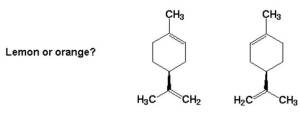d-Limonene adalah komponen biosktif tanaman yang utama ( BAFC-bioactive food components) dari minyak kulit jeruk, 75% dari lemon peel oil, 95% dari orange peel oil, dan 87% dari mandarin peel oil.
Tabel 1 adalah rangkuman penelitian dari aksi d-limonen sebagai agen kemoprevensi kanker dan potensial mekanisme aksinya.
Banyak mekanisme yang diajukan d-limonen sebagai antikanker, namun pada kali ini akan dibahas lebih lanjut mekanisme pada penghambatan farnesyl transferase.
Farnesyl transferase inhibition
A more widely supported mechanism to explain the chemopreventive activity of d-limonene is through inhibition of the prenylation of the monomeric G-protein, Ras which is involved in cell proliferation and migration. Ras is activated via protein prenylation and subsequent association with the cellular membrane. In many carcinomas, Ras is mutated. Preclinical data indicate that d-limonene and its metabolites modulate Ras prenylation via farnesyl transferase inhibition [11, 48, 49]. In normal Ras activation, the enzyme farnesyl transferase facilitates the addition of a farnesyl group to Ras, which, after a cascade of phosphorylation activates Ras, initiating the cellular signaling pathways for cell proliferation and migration. Mutated Ras is associated with aberrant cell proliferation and migration, and a reduced ability to undergo apoptosis, all contributing to carcinogenesis [50]. Figure below (adapted from Brunner et al.) is an illustration displaying the steps needed for Ras activation and the target of farnesyl transferase inhibitors (FTIs), the enzyme farnesyl transferase, subsequently preventing aberrant Ras activation.
Fig. Ras post-translationtional modification and transformation. Ras must be bound to the cell membrane to have transforming activity. Oncogenic Ras proteins lose their transforming activity when attachment to the plasma membrane is blocked by farnesyltransferase inhibitors (FTIs). d-Limonene potentially acts as a less-potent FTI. After prenylation, the next steps in post-translational modification are AAX proteolysis by Rce1 and then a-carboxymethylation of farnesylated cysteine residues by isoprenylcysteine carboxyl methyltransferase. Cysteine palmitoylation sites are contained in H-Ras, N-Ras, and K-Ras4A or a polylysine domain in K-Ras4B as depicted by positive charges in the figure. H-Ras is shown as an example of the three palmitoylated forms (figure and text adapted from Brunner et al. [41])
from : Dosen BIOLOGY MOLEKULAR FARMASI UNSOED



Tidak ada komentar:
Posting Komentar